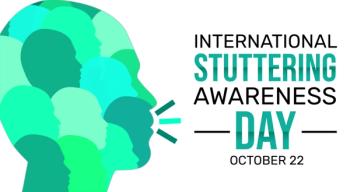
- Vol 33 No 10
- Volume 33
- Issue 10
Brain Pathways: New Approaches to Structure-Function Localization
Is it time again for greater unification of neurology and psychiatry?
The quest to localize brain function has been underway for centuries. One notion proposed in the 19th century by Franz Joseph Gall argued that certain areas of the brain, specialized for particular functions, were reflected in the shape of the overlying skull-the now-discredited theory of phrenology. Localizations for speech and language were pioneered by Marc Dax and articulated forcefully by Paul Broca and Carl Wernicke after postmortem study of affected individuals. At the end of the nineteenth century, Korbinian Brodmann created his now-famous map consisting of 52 cortical areas based on cytoarchtectonic differences. A contrarian view espoused by Pierre Flourens championed a holistic theory; he argued that the brain, like the liver and other tissues, functioned in an integrative manner.
The description of brain microscopic structure by Ramón y Cajal, based on evidence of synaptic connectivity as delineated physiologically by the studies of Charles Sherrington, led to the concepts of circuitry throughout the brain. Studies of clinical-pathological correlations, often based on cases of stroke, led in the 20th century to identification of more refined regional deficits, usually affecting motor, sensory, or ambulatory functions. Landmark studies in patients like HM, who suffered amnesia after bilateral temporal lobe removal for seizures, strengthened the idea of regional specificity for cognitive functions as well. In the past 30 years, studies correlating higher cognitive processes with brain activity have been expanded by refined methods of PET and functional MRI, which allowed correlations of regions activated by mental activities with glucose metabolism, isotope binding, and changes in blood flow.
The Human Connectome Project
In the July 20 issue of Nature, a new map of the human brain was published by an international collaboration called the Human Connectome Project, led by Matthew Glasser and David Van Essen, from Washington University in St Louis.1 After data analysis from multimodal functional (blood-flow) MRI images and an automated neuroanatomical approach, these investigators delineated 180 areas in each hemisphere of the brain in a study of 210 healthy young adults.
The new map of the human cortex represents a new synthesis of the old thesis (localization) and antithesis (holistic) views of the function of the brain. As Glasser and colleagues point out, the synthesis of function, connectivity, and neuroanatomy offers a new pathway to studying human cognition, consciousness, and disease. It provides the ability to discriminate individual differences in location, size, and topology of cortical areas and to link them to behavioral and genetic underpinnings. Of course, the methodology remains at this point largely theoretical and experimental, but a future of practical application seems likely.
The question now under consideration is how this might affect further studies of higher cognitive function in development, aging, and diseases of the nervous system in both neurological and psychiatric disorders.
Correlations of structure- function relations in neurology and psychiatry
As noted already, in the 20th century, the localization theory prevailed, and virtually all students of medicine were taught the “neurological method,” which used anatomic localization as the cornerstone of correct diagnosis, which would then inform therapy. Many of the core tenets of localization-such as language belonging mainly in the left hemisphere, vision in the occipital lobes, hearing in the temporal lobe, motor function in the posterior frontal lobes, and sensation in the parietal lobes-have stood the test of time with regard to mundane neurological diagnosis. However, complex functions such as attention, praxis, cognition, and other functions have eluded static anatomical localization.
Connectivity hypotheses were extensively outlined in the papers of Norman Geschwind on “The Disconnection Syndromes.”2 In addition to these types of analyses, considerable progress has been made in the cytoarchitectonics of disease, particularly in the neurodegenerative disorders of Alzheimer disease, frontotemporal dementia, Lewy body disease, and so on. A new nomenclature based on the dominant abnormally folded protein (eg, tau, synuclein, amyloid, huntingtin, ubiquitin, prions) has shed a new light on the interrelationships among many neurodegenerative conditions.
Once present in the nervous system, these “prion-like” proteins may take on a life of their own and spread via neural connections, possibly explaining the fact that virtually all neurodegenerative diseases start focally and then spread (eg, amyotrophic lateral sclerosis, Alzheimer disease, Huntington disease, Parkinson disease).3 Superimposed on the histopathology, the genetic fingerprint of the various conditions can add a level of texture to these conditions heretofore unknown.
The advent of exquisite structural and then functional imaging, using magnetic resonance, has stimulated a recrudescence of some aspects of the holistic theory in its more modern guise of network theory.
In the case of psychiatry, despite the lack of clear evidence of regional structural changes accompanying the major psychoses, whole brain ECT and brain destructive techniques continued in the late 20th century with prefrontal lobotomy replaced by more refined psycho-surgery. The advent of new techniques of regional neurophysiology, deep brain stimulation (DBS), and transcranial magnetic stimulation (TMS) brought new awareness to the value of precise regional circuit localization. Developed by the precise neuroanatomical-physiological studies of neurologist Mahlon DeLong (2014 winner of the Lasker Prize), DBS has now been used for over 30 years for treatment of movement disorders such as Parkinson disease, tremor, and dystonia.4
Efforts are ongoing to evaluate the potential of DBS in the treatment of major depression and refractory obsessive-compulsive disorders, targeting primarily the anterior inferior cingulate and orbitofrontal cortices. Even obesity, a major public health problem, could be treated with DBS using a hypothalamic target as is being pioneered by Andres Lozano in Toronto.5
According to Helen Mayberg (personal communication), who is a leader in the use of DBS in depression, the major challenge that remains is the lack of coherent anatomical substrates and circuits that can more reliably predict a favorable outcome, which at the moment stands at less than 50%. Better definition in these and in studies of TMS after cortical stimulation depends on the more precise localization of circuits.6,7
Brain plasticity and epigenetics
Ultimately, of course, we would like to know whether treatment for brain disease is actually effective. Does cognitive-behavioral therapy change brain connectivity and responsiveness to the exterior environment? Is there a scientific basis of conventional psychotherapy? Can circuits of activity be strengthened or weakened by experimental manipulations? How do we measure gene function in vivo in the brain for potential correction of genetic disorders?
An exciting new study has proposed that chemically synthesized PET ligands can bind to and identify epigenetic enzymatic pathways that are associated with gene regulation to determine gene activity-turning genes on and off.8,9 In this entirely new conceptual work, the PET ligand marks an enzyme that acetylates histones in DNA, which could be shown to be activated in distributed regions of the brain by remote stimuli. Such studies show promise for a biochemical definition of plasticity at the level of gene regulation.
Is it time again for greater unification of neurology and psychiatry?
Perhaps the neuropsychiatrist of the future will work with this new multimodal parcellation map in a way analogous to the Brodmann map of prior generations to better understand how the brain integrates functional activity relevant not only to neurology but to mental associations-providing even a window into the nature of consciousness itself. It is abundantly clear that the interfaces of neuroscience, neurology, and psychiatry are closing, and the gaps are inconsequential to a student interested in the biological basis of brain function in health and disease.
The notion of circuitry in understanding brain function is rapidly evolving. Brain activity is delineated by circuits that remain active, in varying ways, during wakefulness and sleep and during tasks or at rest (the default network). This results in an entirely new functional neuroanatomy, based not on track-tracing alone but on regional variations in activity correlated with conscious and unconscious events.
It has been proposed that the time has come to unify neurology and psychiatry once again, a proposal that one of us (JBM) has written about before.10 Recently, Torous and colleagues11 advanced a proposal to integrate cognitive-affective neuroscience and neuropsychiatry in our medical school curriculum and in our resident training programs.
Clearly, there are aspects of neurology that have little or no behavioral or cognitive components except those that occur as a result of the disability of the disease. These include virtually all of the disorders of the peripheral nervous system, which comprise about half of clinical neurology in everyday practice. Perhaps neurology, neurosurgery, and psychiatry can now be considered as a Venn diagram with significant areas of overlap. In the end, all our efforts ought to be directed toward better treatments and prognostic outlooks for the future.
Disclosures:
Dr. Martin is Edward R. and Anne G. Lefler Professor of Neurobiology, Emeritus, Harvard Medical School, Boston, MA. Dr. Samuels is Chair, Department of Neurology, Brigham and Women’s Hospital, Boston, MA, Miriam Sydney Joseph Professor of Neurology, Harvard Medical School. The authors report no conflicts of interest concerning the subject matter of this article.
References:
1. Glasser MF, Coalson TS, Robinson EC, et al. A multi-modal parcellation of human cerebral cortex. Nature. 2016;536:171-178.
2. Catani M, FFytche DH. The rises and falls of disconnection syndromes. Brain. 2005;128(pt 10):2224-2239.
3. Kwon D. The great brain drain. Scientific American. 2015;313:17-18.
4. Bronstein JM, Tagliati M, Alterman RL, et al. Deep brain stimulation for Parkinson disease: an expert consensus and review of key issues. Arch Neurol. 2011;68:165.
5. Kumar R, Simpson CV, Froelich CA, et al. Obesity and deep brain stimulation: an overview. Ann Neurosci. 2015;22:181-188.
6. Mayberg HS, Riva-Posse P, Crowell AL. Deep brain stimulation for depression: keeping an eye on a moving target. JAMA Psychiatry. 2016;73:439-440.
7. Holtzheimer PE, Kelley ME, Gross RE, et al. Subcallosal cingulate deep brain stimulation for treatment-resistant unipolar and bipolar depression. Arch Gen Psychiatry. 2012.
8. Wey HY, Gilbert TM, Zürcher NR, et al. Insights into neuroepigenetics through human histone deacetylase PET imaging. Sci Transl Med. 2016;8:351ra106.
9. Martin JB. The integration of neurology, psychiatry, and neuroscience in the 21st century. Am J Psychiatry. 2002;159:695-704.
10. Hager M. The Convergence of Neuroscience, Behavioral Science, Neurology, and Psychiatry. Proceedings of a Conference Chaired by Joseph B. Martin. New York: Penguin Books; 2005.
11. Torous J, Stern AP, Padmanabhan JL, et al. A proposed solution to integrating cognitive-affective neu-roscience and neuropsychiatry in psychiatry residency training: the time is now. Asian J Psychiatry. 2015;17:116-121.
Articles in this issue
about 9 years ago
Brief Cognitive Behavioral Therapy Interventions for Psychosisabout 9 years ago
Exploring the Psychosis-Depression Interface: Clinical Implicationsabout 9 years ago
“Doctor, Am I Gay?” A Primer on Sexual Identitiesabout 9 years ago
Outside the Pill Box: The Systems-Based Practice of PsychiatryNewsletter
Receive trusted psychiatric news, expert analysis, and clinical insights — subscribe today to support your practice and your patients.













